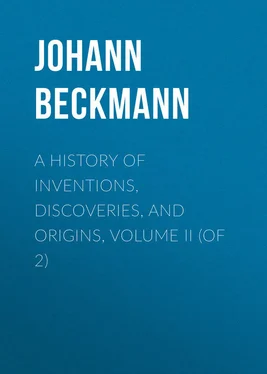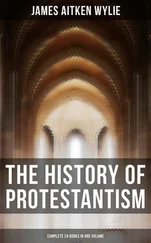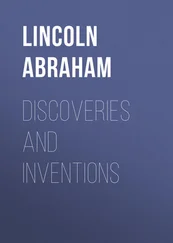Johann Beckmann - A History of Inventions, Discoveries, and Origins, Volume II (of 2)
Здесь есть возможность читать онлайн «Johann Beckmann - A History of Inventions, Discoveries, and Origins, Volume II (of 2)» — ознакомительный отрывок электронной книги совершенно бесплатно, а после прочтения отрывка купить полную версию. В некоторых случаях можно слушать аудио, скачать через торрент в формате fb2 и присутствует краткое содержание. Жанр: foreign_antique, foreign_prose, на английском языке. Описание произведения, (предисловие) а так же отзывы посетителей доступны на портале библиотеки ЛибКат.
- Название:A History of Inventions, Discoveries, and Origins, Volume II (of 2)
- Автор:
- Жанр:
- Год:неизвестен
- ISBN:нет данных
- Рейтинг книги:4 / 5. Голосов: 1
-
Избранное:Добавить в избранное
- Отзывы:
-
Ваша оценка:
- 80
- 1
- 2
- 3
- 4
- 5
A History of Inventions, Discoveries, and Origins, Volume II (of 2): краткое содержание, описание и аннотация
Предлагаем к чтению аннотацию, описание, краткое содержание или предисловие (зависит от того, что написал сам автор книги «A History of Inventions, Discoveries, and Origins, Volume II (of 2)»). Если вы не нашли необходимую информацию о книге — напишите в комментариях, мы постараемся отыскать её.
A History of Inventions, Discoveries, and Origins, Volume II (of 2) — читать онлайн ознакомительный отрывок
Ниже представлен текст книги, разбитый по страницам. Система сохранения места последней прочитанной страницы, позволяет с удобством читать онлайн бесплатно книгу «A History of Inventions, Discoveries, and Origins, Volume II (of 2)», без необходимости каждый раз заново искать на чём Вы остановились. Поставьте закладку, и сможете в любой момент перейти на страницу, на которой закончили чтение.
Интервал:
Закладка:
When under the appellation of lending-house we understand a public establishment where any person can borrow money upon pledges, either for or without interest, we must not compare it to the tabernæ argentariæ or mensæ nummulariæ of the Romans. These were banking-houses, at which the state and rich people caused their revenues to be paid, and on which they gave their creditors orders either to receive their debts in money, or to have the sums transferred in their own name, and to receive security for them. To assign over money and to pay money by a bill were called perscribere and rescribere ; and an assignment or draft was called attributio . These argentarii , mensarii , nummularii , collybistæ and trapezitæ followed the same employment, therefore, as our cashiers or bankers. The former, like the latter, dealt in exchanges and discount; and in the same manner also they lent from their capital on interest, and gave interest themselves, in order that they might receive a greater. Those who among the ancients were enemies to the lending of money on interest brought these people into some disrepute; and the contempt entertained for them was probably increased by prejudice, though those nummarii who were established by government as public cashiers held so exalted a rank that some of them became consuls. Such banking-houses existed in the Italian States in the middle ages, about the year 1377. They were called apothecæ seu casanæ feneris 6 6 M. Manni circa i sigilli antichi dei secoli bassi, vol. xxvii. p. 86. The author here quotes from an ancient city-book the following passage: – “Franciscus fenerator pro se et apotheca seu casana fenoris , quam tenebat in via Quattro Pagoni,” &c.
, and in Germany Wechselbanke , banks of exchange; but they were not lending-houses in the sense in which I here understand them.
Equally distinct also from lending-houses were those banks established in the fourteenth century, in many cities of Italy, such, for example, as Florence, in order to raise public loans. Those who advanced money on that account received an obligation and monthly interest, which on no pretext could be refused, even if the creditor had been guilty of any crime. These obligations were soon sold with advantage, but oftener with loss; and the price of them rose and fell like that of the English stocks, but not so rapidly; and theologists disputed whether one could with a safe conscience purchase an obligation at less than the stated value, from a proprietor who was obliged to dispose of it for ready specie. If the State was desirous or under the necessity of repaying the money, it availed itself of that regale called by Leyser regale falsæ monetæ , and returned the capital in money of an inferior value. This establishment was confirmed, at least at Florence, by the pontiff, who subjected those who should commit any fraud in it to ecclesiastical punishment and a fine, which was to be carried to the papal treasury: but long before that period the republic of Genoa had raised a loan by mortgaging the public revenues. I have been more particular on this subject, because Le Bret 7 7 Algemeine Welthistorie, xlv. p. 10.
calls these banks, very improperly, lending-houses; and in order to show to what a degree of perfection the princely art of contracting and paying debts was brought so early as the fourteenth century.
Those who have as yet determined the origin of lending-houses with the greatest exactness, place it, as Dorotheus Ascanius, that is Matthias Zimmermann 8 8 This theologian, born at Eperies in Hungary in 1625, was driven from his native country on account of his religion, and died superintendant at Meisse in 1689. He wrote, besides other works, Dorothei Asciani Montes Pietatis Romanenses, historice, canonice, et theologice detecti. Lipsiæ, 1670, 4to. This book is at present very scarce. I shall take this opportunity of mentioning also the following, because many who have written on lending-houses have quoted it, though they never saw it: – Montes Pietatis Romanenses, das ist, die Berg der Fromheit oder Gottesforcht in der Stadt Rom. Durch Elychnium Gottlieb. Strasburg, 1608, 8vo. It contains nothing of importance that may not be found in Ascianus.
, does, in the time of Pope Pius II. or Paul II., who filled the papal chair from 1464 to 1471; and the reason for supposing it to have been under the pontificate of the latter is, because Leo X. in his bull, which I shall quote hereafter, mentions that pope as the first who confirmed an establishment of this kind. As the above account did not appear to me satisfactory, and as I knew before that the oldest lending-houses in Italy were under the inspection of the Franciscans, I consulted the Annals of the Seraphic Order, with full expectation that this service would not be omitted in that work; and I indeed found in it more materials towards the history of lending-houses than has ever been collected, as far as I know, by any other person.
As complaints against usury, which was practised by many Christians, but particularly by the Jews, became louder and more public in Italy in the fifteenth century, Barnabas Interamnensis, probably of Terni, first conceived the idea of establishing a lending-house. This man was originally a physician; had been admitted to the degree of doctor; was held in great respect on account of his learning; became a Minorite, or Franciscan; acquired in that situation every rank of honour, and died, in the first monastery of this order at Assisi ( in monte Subasio 9 9 Of this Barnabas I know nothing more than what I have here extracted from Waddingii Annales Minorum, tom. xiv. p. 93. Wadding refers to Marian. lib. v. c. 40. § 17; and Marc. 3. p. lib. 5. cap. 58. The former is Marianus Florentinus, whose Fasciculus Chronicoram Ordinis Minorum, which consists of five books, was used in manuscript by Wadding, in composing his large work, and in my opinion has never been printed. Marc. is Marcus Ulyssoponensis, whose Chronica Ordinis Minorum I have not been able to procure, though it is translated into several languages. See Waddingii Scriptores Ordinis Minorum. Romæ 1650, fol. pp. 248, 249.
), in the year 1474. While he was employed in preaching under Pope Pius II. at Perugia, in the territories of the Church, and observed how much the poor were oppressed by the usurious dealings of the Jews, he made a proposal for raising a capital by collections, in order to lend from it on pledges to the indigent, who should give monthly, for the use of the money borrowed, as much interest as might be necessary to pay the servants employed in this establishment, and to support it. Fortunatus de Copolis, an able jurist of Perugia, who after the death of his wife became also a Franciscan, approved of this plan, and offered to assist in putting it into execution. To be assured in regard to an undertaking which seemed to approach so near to the lending on interest, both these persons laid their plan before the university of that place, and requested to know whether such an establishment could be allowed; and an answer being given in the affirmative, a considerable sum was soon collected by preaching, so that there was a sufficiency to open a lending-house. Notwithstanding this sanction, many were displeased with the design, and considered the receiving of interest, however small it might be, as a species of usury. Those who exclaimed most against it were the Dominicans ( ex ordine Prædicatorum ): and they seem to have continued to preach in opposition to it, till they were compelled by Leo X. to be silent; while the Franciscans, on the other hand, defended it, and endeavoured to make it be generally adopted. The dispute became more violent when, at the end of a year, after all expenses were paid, a considerable surplus was found remaining; and as the managers did not know how to dispose of it, they at length thought proper to divide it amongst the servants, because no fixed salaries had been appointed for them. Such was the method first pursued at Perugia; but in other places the annual overplus was employed in a different manner. The particular year when this establishment began to be formed I have nowhere found marked; but as it was in the time of Pius II., it must have been in 1464, or before that period 10 10 This is confirmed by M. B. Salon, in t. 2. Contr. de Justit. et Jure, in ii. 2 Thom. Aquin. qu. 88. art. 2. controv. 27: “Hujus modi mons non erat in usu apud antiquos. Cœpit fere a 150 annis, tempore Pii II.” In C. L. Richard’s Analysis Conciliorum Generalium et Particularium, Venetiis, 1776, 4 vol. fol. iv. p. 98, I find that the first lending-house at Perugia was established in the year 1450; but Pius II., under whose pontificate it appears by various testimonies to have been founded, was not chosen pope till the year 1458.
. It is very remarkable that this pontiff confirmed the lending-house at Orvieto ( Urbs Vetus ) so early as the above year; whereas that at Perugia was sanctioned, for the first time, by Pope Paul II. in 1467. It is singular also that Leo X., in his confirmation of this establishment, mentions Paul II., Sixtus IV., Innocent VIII., Alexander VI. and Julius II.; but not Pius II. Pope Sixtus IV., as Wadding says, confirmed in 1472 the lending-house at Viterbo, which had, however, been begun so early as 1469, by Franciscus de Viterbo, a Minorite 11 11 Bussi, Istoria della città di Viterbo. In Roma, 1742, fol. p. 271.
.
Интервал:
Закладка:
Похожие книги на «A History of Inventions, Discoveries, and Origins, Volume II (of 2)»
Представляем Вашему вниманию похожие книги на «A History of Inventions, Discoveries, and Origins, Volume II (of 2)» списком для выбора. Мы отобрали схожую по названию и смыслу литературу в надежде предоставить читателям больше вариантов отыскать новые, интересные, ещё непрочитанные произведения.
Обсуждение, отзывы о книге «A History of Inventions, Discoveries, and Origins, Volume II (of 2)» и просто собственные мнения читателей. Оставьте ваши комментарии, напишите, что Вы думаете о произведении, его смысле или главных героях. Укажите что конкретно понравилось, а что нет, и почему Вы так считаете.












